When your yacht needs to be transported, you can handle the passage yourself, hire a delivery skipper and crew, haul it by road, or reserve a berth on a specialized yacht transportation ship, fondly referred to as a ship that ships ships.
This YachtBuyer article examines the options to help you make informed decisions.
By You
If time and resources permit, embarking on a long-distance passage on your own yacht can be an exhilarating adventure.
This DIY option offers personal enjoyment and a sense of accomplishment, allowing you to navigate from A to B on your own terms. Managing the transportation personally not only reduces costs but also provides the flexibility to create a custom itinerary.
However, embarking on a solo passage is highly discouraged as adequate rest is crucial for safe navigation. Simply relying on autopilot with a radar alarm during nighttime navigation in open waters is not ideal.
Consider the company you would choose for an extended journey. Compatibility of character is the key to whether the trip will be enjoyable or potentially turn into an absolute nightmare of a passage. Reflect on individuals you frequently cruise with and assess their availability for undertaking the trip with you.
If you lack experience, or people you know who are suitable and available, consider hiring an experienced delivery crew to maintain a sustainable watch schedule and handle potential contingencies, while also allowing you to enhance your own skills during the journey. We cover this in the next section.

If you plan to undertake the trip independently, ensure you have the necessary visas and passports for the point of disembarkation, along with the original boat documents, to facilitate a smooth check-in process at your destination port.


The research you conduct in this regard before embarking on your journey will prove invaluable upon your arrival, when all you are likely to want to do is step onto dry land and unwind.


By Crew
There are two primary types of operators: many delivery skippers who operate independently, and companies that coordinate deliveries using a pool of experienced skippers and crew.
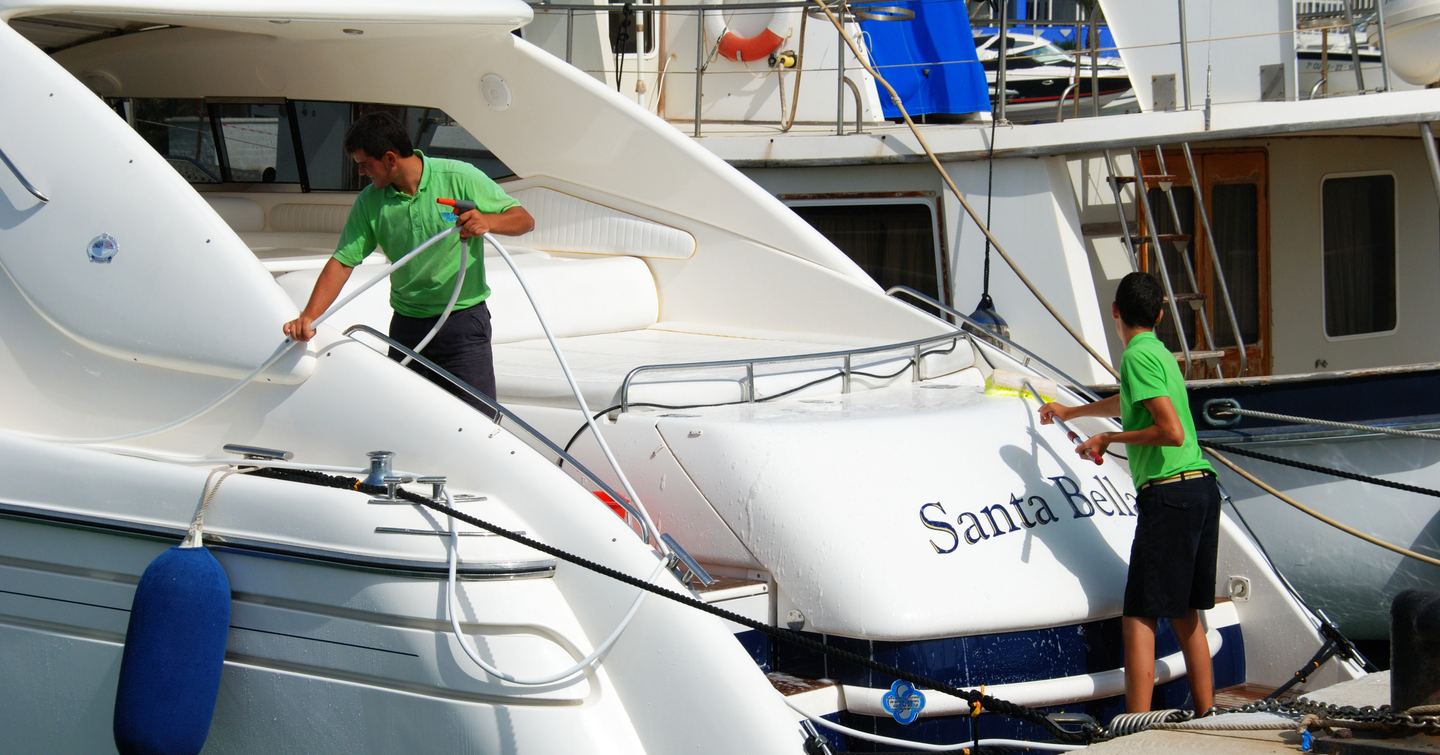
The Mile Builder
In some cases, novice crew members may volunteer for passages to gain valuable sea miles and experience for their future careers. When considering such arrangements, exercise caution and conduct thorough due diligence with individuals to establish a clear understanding of remuneration and expenses.
Typically, it is expected that costs for transfers to and from the yacht, as well as provisions for food and general sustenance during the journey, will be covered. It is advisable to be clear about expense responsibilities and repatriation expectations. Additionally, ensure you have access to essential documents such as their passport, relevant visas, next of kin information, and any attained yachting qualifications. Some volunteer crew will seek to fulfill the required sea miles for their Yachtmaster examination and may possess prior nautical qualifications.
While lifelong friendships can blossom from such adventures, there have also been an equal amount of instances where crew members have hastily departed upon mooring, never to be seen again. Consider planning a stop around 48-72 hours into the journey to allow for an initial settling-in phase and to assess your compatibility for the extended period onboard.

The Nomad
There are seasonal delivery crew who spend their lives traversing the globe, using delivery trips as a means to explore the world. These individuals can be an invaluable asset, possessing extensive experience in long-distance passages and exhibiting a non-combative and harmonious character, enabling easy coexistence with other crew during extended trips.
The Specialist
When enlisting the services of a specialized delivery crew company, certain guarantees are typically in place, providing a measure of assurance for a secure delivery. Such companies maintain a roster of experienced crew members suitable for specific trip durations, locations, and start-to-finish requirements. While this option may involve higher costs, it aligns with the adage that you get what you pay for. Moreover, in the event of any dissatisfaction with the service, you have a responsible point of contact for resolution. Conversely, opting for random individuals leaves no avenue for addressing potential grievances.
By Road
Opting for road transport to reach remote cruising areas can prove to be practical and cost-effective, particularly for those who have limited time for extended sea deliveries but a strong desire to explore distant locales. Specialized low-loaders designed for boat transportation have evolved to become remarkably sophisticated, enabling the routine hoisting of even 15m-18m (50ft-60ft) motor yachts onto trucks for journeys across continents.
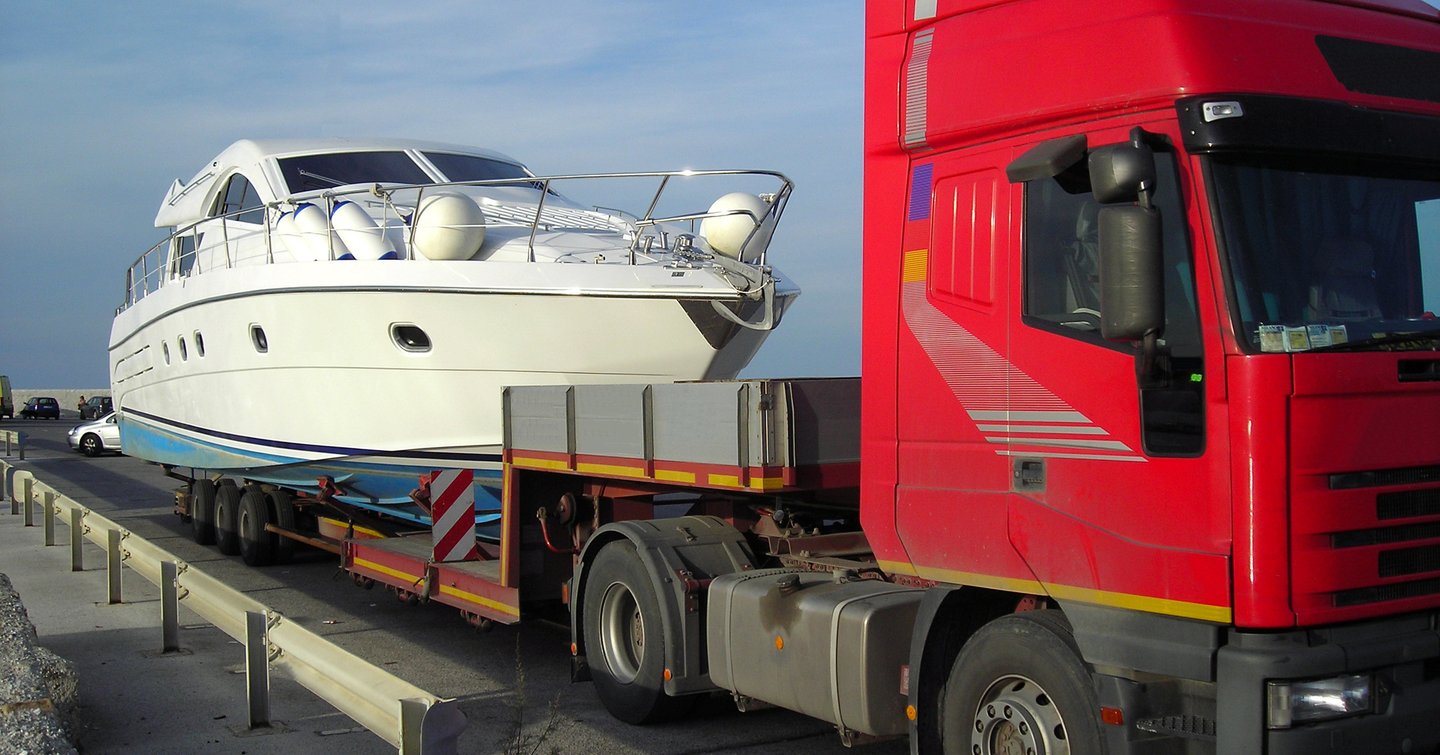
For many yacht owners, the primary aim has been to optimize seasonal enjoyment, ensuring that precious vacation time can be spent in regions with almost guaranteed ideal cruising weather. Many UK yacht owners frequently employ road transport companies to move their vessels from the chilly British climate to the inviting warmth of the Mediterranean.
Along the European Atlantic coasts, large boats can be safely delivered by low-loaders to various destinations, including the French and Spanish Biscay regions, Galicia in north-west Spain, and further south to Portugal's west or Algarve coasts. In the continental USA, boats can be effortlessly transported from state to state or city to city.
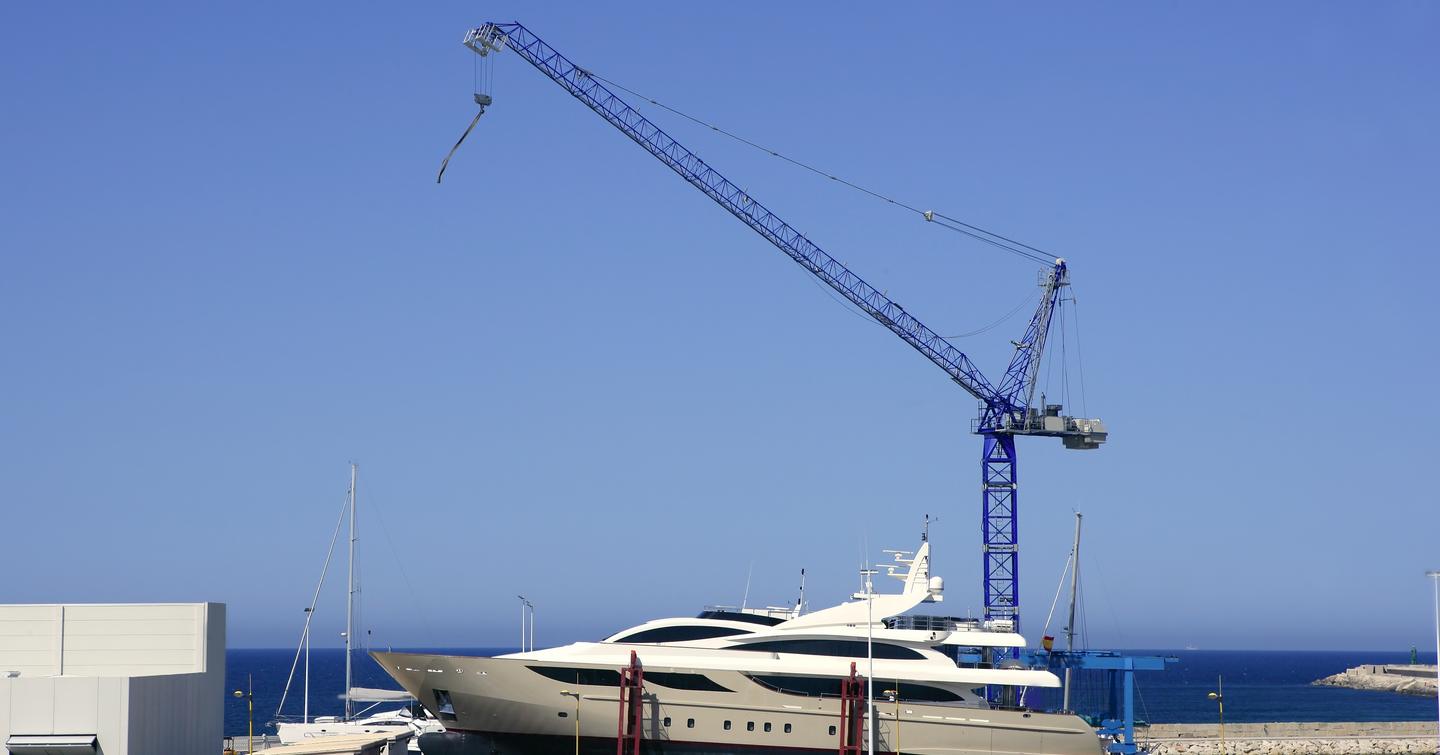
Specialized companies offer comprehensive services, managing everything from arranging insurance and road permits to securing suitable routes and coordinating certified escorts, if necessary. These services provide a stress-free solution for boat logistics, particularly within specific size parameters.
By Ship
While some yachts can undertake ocean journeys on their own, others must be shipped for various reasons. These reasons may include the yacht's smaller size or limited fuel capacity, the owner's desire to minimize wear and tear on the vessel, or the yacht being booked for a charter at the intended destination with a tight schedule to meet.

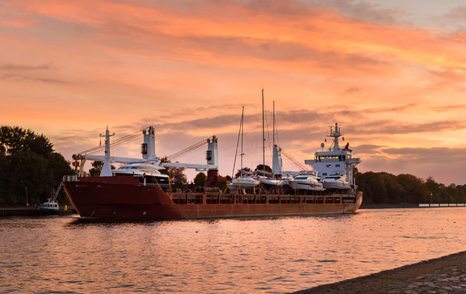
Popular for extensive passages such as trans-Atlantic voyages, numerous yacht transportation companies offer shipping solutions. These colossal ships, quite literally shipping ships, present quite a sight to behold.
These companies utilize three primary types of yacht transport ships:
- the LoLo (lift on/lift off) method, where yachts are loaded onto the ship using sizable cranes either from land or water;
- the FoFo (float on, float off) approach, where the yacht is floated onto semi-submersible yacht transport ships;
- and the RoRo (roll on/roll off) option, suitable for smaller vessels that can be loaded onto trailers.
Loading dates typically span a window of approximately three weeks, so it is crucial to align your schedule accordingly. Certain shipping dates are determined based on weather considerations, such as avoiding the hurricane season or taking advantage of favorable trade winds.

In the commonly used LoLo method, a yacht is hoisted by crane onto a commercial ship and secured in a specially designed cradle on its deck, sharing space with other cargo throughout the journey.
Alternatively, the popular FoFo approach involves semi-submersible ships partially immersed in water. The yacht is floated into the ship and fastened in a cradle on the deck by divers. Subsequently, the water is drained from the hold. At the conclusion of the voyage, the process is reversed, allowing the yacht to float out.
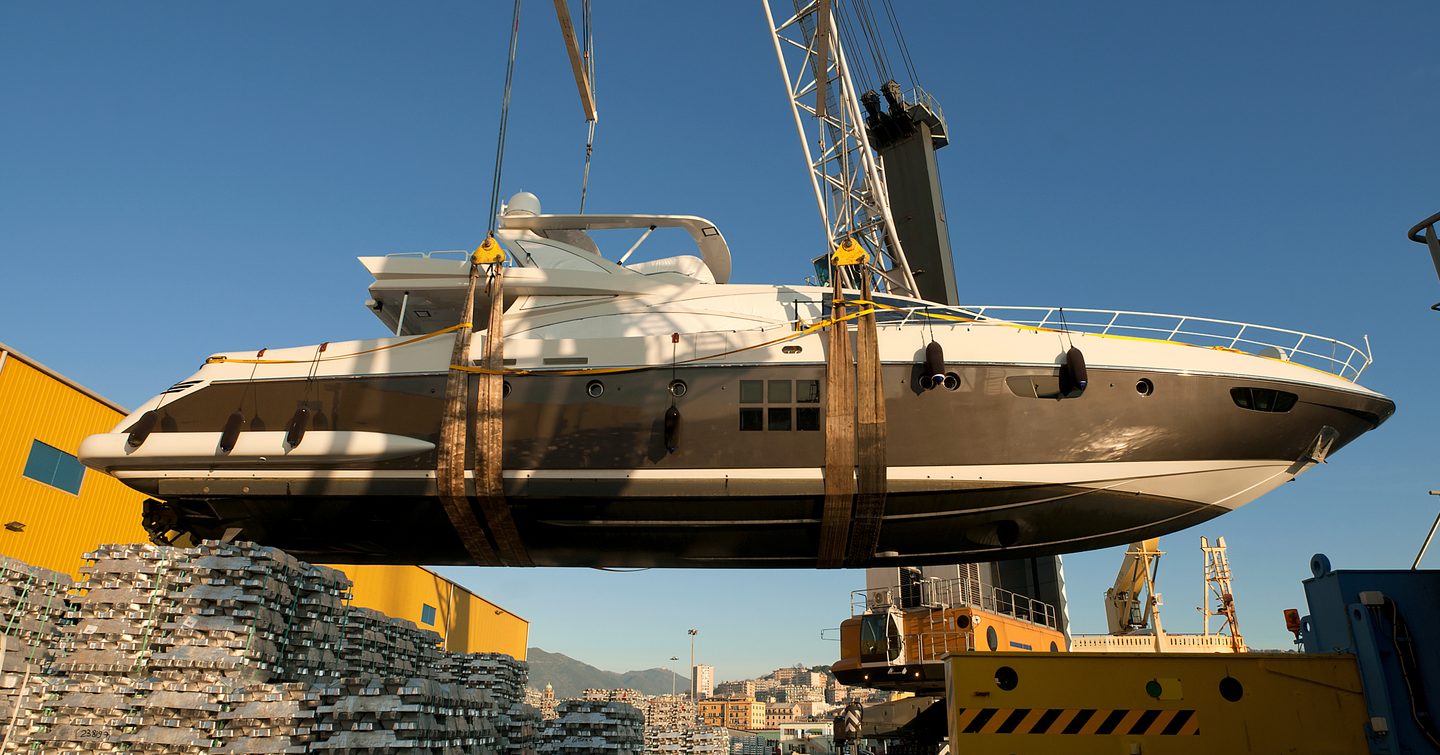
Ride Along
In specific cases, captains may opt to send one or two crew members along with the yacht to facilitate maintenance tasks during the passage. These accompanying crew members, often referred to as 'riders,' are typically not allowed to stay overnight on the yachts. Instead, accommodation and dining facilities are arranged on the main ship.
Summary
When planning on transporting your yacht, the key factors to consider are:
- Yacht dimensions as LOA will determine appropriate options
- Logistics and costs
- Insurance: don't assume your annual cruising insurance will cover a voyage of over 60nm
- Legal compliance: ensure you have the correct paperwork in place for the port of destination
- Route planning to ensure the safest possible viable route
- Timeframe: build in a contingency of at least 14 days





